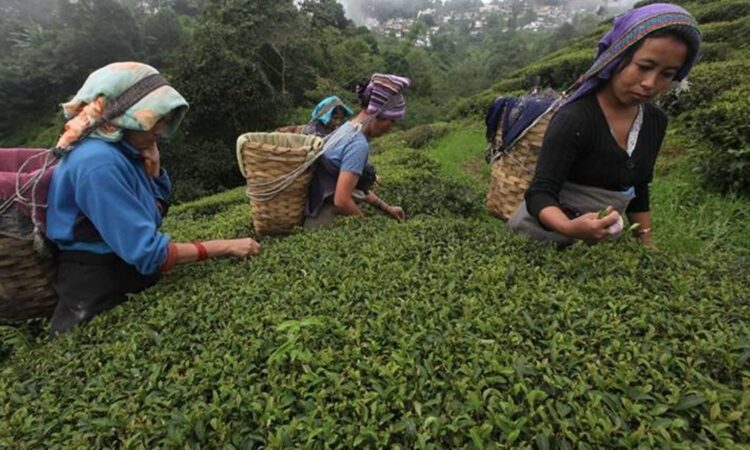
The Darjeeling tea industry is witnessing at least 10-15% fall in demand for its world-famous aromatic tea in Europe compared to last year, a contraction that has virtually coincided with Germany slipping into recession.
Indian Tea Exporters Association chairman Anshuman Kanoria told FE, “Germany is the consuming and trading hub for Darjeeling tea in Europe. In Europe, the demand is at least 10-15% less compared to last year. Moreover, unit sale price is same to marginally lower.”
Also read: GMR Airports Infrastructure posts Q4FY23 loss at Rs 441.47 crore, revenue up 47.6%
“Darjeeling tea exports to Europe are expected to be lower this year,” Kanoria said.
Germany’s gross domestic product fell by 0.3% in the first quarter of the year. This followed a decline of 0.5% in the fourth quarter of 2022. A recession is commonly defined as two successive quarters of contraction.
The total exports of Darjeeling tea last year stood at over 3 million kgs. About 45-50% of the annual tea production generally gets exported. Europe and Japan are the two large overseas markets for this premium tea, the first product to get a geographical identification (GI) tag in India.
According to exporters, quantity offtake this year is also low in Japan primarily due to weak yen. There is a lot of price pressure too.
For Darjeeling first flush tea, there has been a shortage of high quality crops and a surplus of mediocre quality due to erratic weather this year.
Up to the middle of April, the first flush crop had been down by 30% due to hot and dry weather conditions. Thereafter, the hills received abundant rainfall, resulting in a bumper crop during the end of April and first week of May. But this crop quality was low-medium.
“Finally, there was a shortage of high quality first flush tea and a surplus of mediocre quality tea. This is not good for the economics of Darjeeling tea industry,” Kanoria said.
Darjeeling tea depends on rains for both quantity and quality of first flush, which is special and fetches the highest price on the market. The first flush, which marks the start of a new season, contributes around 20-25% of the annual tea production in Darjeeling.
“Now due to hot weather conditions, the second flush of tea has been delayed by at least two weeks.” Kanoria informed. Second flush contributes around 20% of annual Darjeeling tea production.
Darjeeling tea production stood at 6.6 million kgs in 2022 against 7.01 million kgs in 2021.
In fact, Darjeeling’s tea industry has been witnessing a gradual fall in production over the last more than a decade. In 2011, tea production was 9.14 million kgs, while it was 8.13 million kgs in 2016. The production has been hit by climate change, labour issues, lower productivity and profitability, according to industry insiders. Facing financial crises, many planters have sold gardens in recent years.






